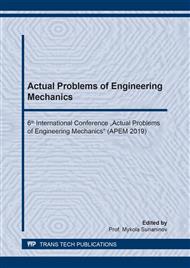p.3
p.13
p.20
p.26
p.35
p.44
p.50
p.61
p.68
Influence of Organic Matters on the Calcium Carbonate Decarbonization Process
Abstract:
Pure calcium carbonate, chalk, and coal wastes are taken as starting materials. The Gibbs energy of calcium carbonate decarbonization reactions is calculated. By the method of thermodynamic analysis, the effect of carbon and its gasification products on the calcium carbonate decarbonization process is investigated. The intensifying effect of organic matter during heat treatment of calcium carbonate is shown. In addition to carbon, the decarbonization reactions are influenced by gases evolved as a result of the gasification of the organic part of the coal waste. It is theoretically proven that the organic component of coal waste contributes to lowering the temperature of the onset and end of the decomposition of calcium carbonate. To confirm the theoretical background, experimental studies of the behavior of mixtures during heating have been carried out. The effect of organic matter on decarbonization of pure calcium carbonate and chalk has been studied. Thermograms have shown that less caloric energy is required for the decarbonization of chalk than for the decarbonization of pure CaCO3. Organic transformations occur in the material layer, which contributes to intensive heat transfer. The products of thermochemical transformations of the organic mass increase the efficiency of the process of decarbonization of calcium carbonate using the waste of coal enrichment in the composition of the raw mix. The organic component of the waste not only reduces the amount of heat energy expended on the endothermic process of calcination, its presence in the raw material mix reduces the temperature of the process of calcination as pure calcium carbonate and chalk.
Info:
Periodical:
Pages:
35-43
Citation:
Online since:
August 2019
Authors:
Price:
Сopyright:
© 2019 Trans Tech Publications Ltd. All Rights Reserved
Share:
Citation:


